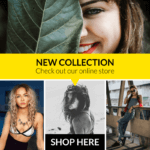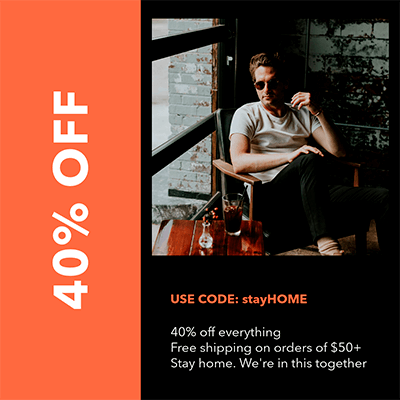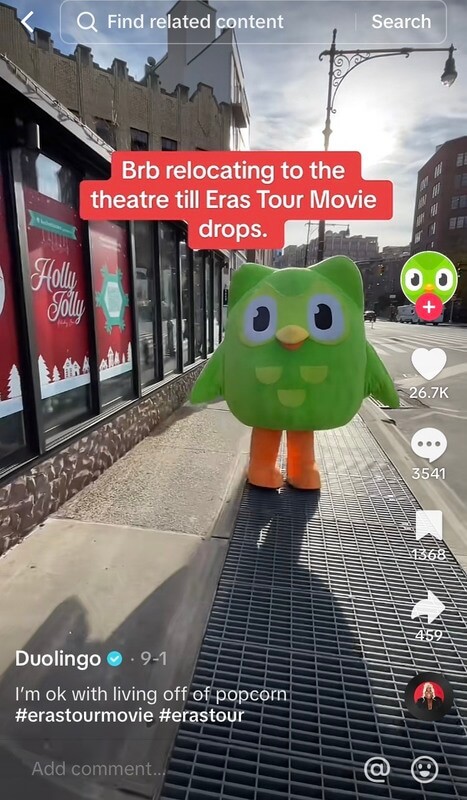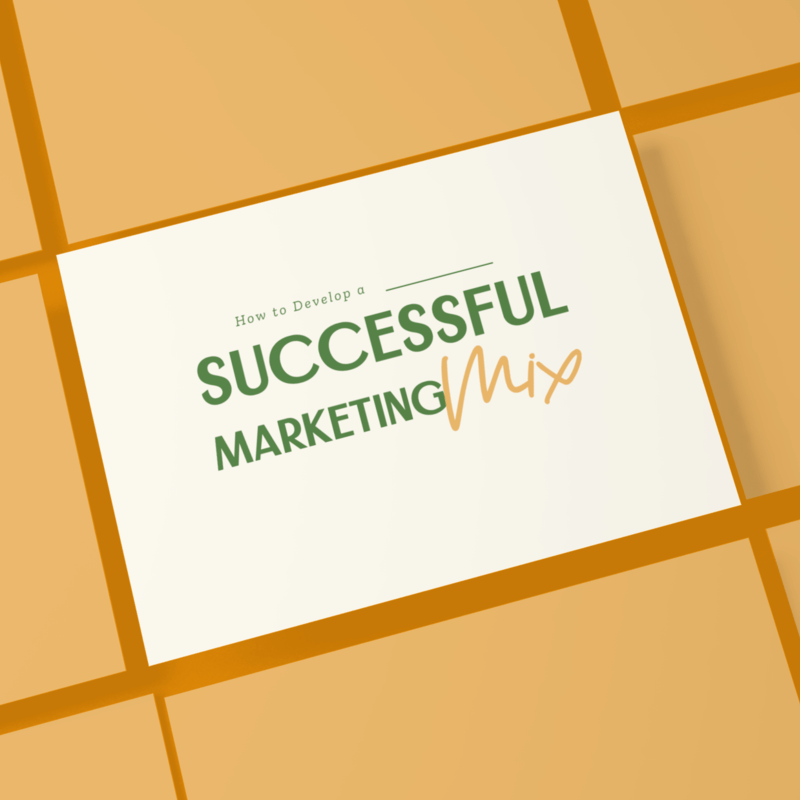
What’s the magic formula behind an enterprise’s success?🪄 While there’s no one-size-fits-all answer, we could pinpoint one common factor: being strategic. Leave everything to good luck? Not a chance! Thriving businesses create the exact product that the market needs at the correct price and distribute it to them at the proper place. In other words, the right marketing mix strategy has always been the secret ingredient to successful businesses. Curiosity piqued? Read on! 😌
Here Is What You’ll Find 🔍
What Is a Marketing Mix Strategy? 🤔
It is a plan developed after the business’s goals have been clearly defined and adequately understood. Every aspect of this framework must align to drive the objectives toward success collectively. And, since every commercial venture’s end goal is to make a profit and gain market shares, the marketing mix is kind of a big deal.
So, where to start? Well, you should start designing your marketing mix strategy after you’ve done these things:
1. Determine Your Company’s Goals & Objectives ✅
Designing a marketing mix strategy would be foolish when the business goal remains unknown. ‘Disrupting the system’ should never be the basis on which a business launches a product into the market. 🙃
So, even if the business existed before, defining the objectives is very important. Think of them as the compass needle that’ll enable marketers to know when they are doing well and when they are failing. 🧭
2. Know Your Competitive Advantage 🌟
Think of it this way: your business is entering a market that is either already saturated or relatively reaching a significant saturation level. If you’re really lucky, “relatively” means less competition. Therefore, knowing who your competitors are will help you understand where you fit the market. 🤔
For example, say you want to open a burger shop 🍔. First, you’ll need to conduct market research to identify which other businesses sell the same product within your area or city. Then, you’ll research what burgers these guys sell and dive into some of the following questions as a guideline:
🍟 1. What do they offer that attracts people?
🧐 2. What are they not doing that you can do?
✨ 3. What makes your product different from your competitors?
😋 4. What unique benefit will customers enjoy when they use your product?
📌 Remember, the gap your competitors are unable to fill could be your area of opportunity. That is to say, your Unique Selling Point (USP) can be your advantage. 😀
3. Define Your Market & Ideal Customers 🎯
Your ideal customers are those who need your product and are willing to pay for it. Now, how can you identify them? Enter market research! 🔎 Overall, this strategic process involves gathering insights such as market trends, demographics, and consumer behavior to pinpoint your buyer persona. 🕵🏻
Or, if you’re already in the market, you can ask your customers what they want. You could implement this research through surveys, analyzing feedback, and engaging with clients through social media channels. By directly seeking their opinion, you’re actively strengthening your business’s connection with them while gaining valuable data. ✨
Above all, it’d be best to understand who your market is before taking any step into designing and implementing your marketing mix strategy. 🌟
The 4PS Needed to Create a Marketing Mix Strategy 💡
If you’re a marketing professional, you already know the popular 4Ps: the foundation for making a marketing mix. Although there have been tweaks to the 4P, with extra Ps added, the framework still holds:
📦 Product
💵 Price
🗺 Place
📣 Promotion
Let’s break down what each one entails!
1. Product 📦
In short, products are the goods or services you will offer customers. As a business, you must conduct market research to know your client’s needs, interests, and pain points to identify how your products, goods, or services can meet those factors. ✅
In the product stage, all departments are involved in designing a ‘great’ product. From the sales team to the product development team, all hands must be on deck to ensure a successful product launch. 🌟
Launching a new product? These two components should be at the heart of the design:
⭐️ Branding
This ranges from the logo design to the name of the company and the emotional effect you want your business to evoke on your customers. Even though it is a significant component of it, branding goes beyond aesthetic appeal.
Moreover, branding is about how you want your customers to feel when they come in contact with the product. The “WHY” of your business should be the motivating factor in defining your brand. ✨
Simon Sinek, in his book Start With Why, said that starting with WHY gives brands the chance to communicate a deeper meaning to their customers.
So, while the logo, color, and brand name are necessary, ensure you have a good reason for the product. You’ll need this WHY when promoting your product.
🤩 Bonus Reading: The Ultimate Guide to Logo Design
Branded long sleeve polo shirt mockup of a couple of coworkers
🛍 Packaging
In what form will the product come? If your product is a tangible good, the material it’s stored in and distributed is essential. The packaging should be both aesthetically appealing and useful. On the other hand, if you’re offering a service, your packaging options could come in the form of different benefits. 😀
Gift bag mockup featuring a woman
2. Price 💵
The price of a product is dependent on the market and the customers you’re serving. If the market is already filled with luxury products, then your costs and fees should reflect the market’s reality. If you are all about disrupting the pricing dynamics of the market, ensure your product has the quality to offer this disruption. 👌🏻
Think about how much your target can afford and how much your competitors price their products. Collaboration with the sales team is needed to know how much discount can be allowed that will not affect the profit margins. 💸
🤑 Tool Alert! Try out our Profit Calculator tool to determine how much you can earn by selling your products.
3. Place 🗺
The place is the distribution channel you will use to get your product to your customers. So, ask yourself, “What distribution channel is cost-effective and easily accessible by your potential clients?”.
In an online-dominated world, choosing whether or not you should own a website or an online store is almost non-negotiable. The usefulness of an online store or website depends on where your customers go for their needs. Where will you sell your products? Online or offline? 🌐
What’s the use of having a great product at an excellent price if it can’t be distributed to the customers? This process needs to be in sync with the product’s market base. Wherever your customers are is where you should distribute your products, too. 📍
And, if you will be using retailers, think about how much discount you will give the retailers. And the salespeople? How many salespeople will you need? These considerations aren’t just inquiries but the building blocks of a well-thought-out distribution strategy. 🌍
👉🏻 The market research you’ve conducted earlier will inform you how viable the market is and where your ideal customers hang out. 🙋🏻
4. Promotion 📣
Promoting your product is the final phase of the four-pronged marketing mix strategy. In a nutshell, it means telling people about your product, its remarkable qualities, and how it will improve their lives. 😌
The promotion aims to get the customers to like and trust your business’s products or services, choosing them over your competitor’s. It sets apart your differentiator, which ultimately helps your brand stay ahead in the market.
Moreover, as a strategy, it helps build brand awareness by consistently showcasing your product’s or service’s unique value through consistent messaging across various channels. This may include social media, content marketing, or even influencer collaborations. P.S. We’ll share more about this later, so keep reading! 😀
All in all, promotion is blowing your own trumpet. Loud. 🎺
Things to Consider Before Selecting a Marketing Channel 🗒
Whether you opt for social media, traditional advertising, or email marketing (just to name a few!), know that every medium possesses unique characteristics, strengths, and audience demographics. Therefore, choosing the right marketing channel can make all the difference in how potential customers perceive and embrace your brand. 👩🏻👦🏻👩🏻
Think about where your ideal customers spend their time. Is it the radio? 📻 The television? 📺 What social media platforms are they most likely to engage in? 📱Additionally, do not rule out the power of mouth-to-mouth marketing when choosing a promotional channel and message.
🌟 Create a buzz around your brand with eye-catching banner mockups that demand attention!
Before selecting a marketing channel, you should set SMART: Specific, Measurable, Achievable, Realistic, and Time-Bound marketing goals. These will ensure you don’t waste valuable resources on promoting your products by implementing a strategic and data-driven approach. ✅
Promotional Channels to Use for Your Products 📢
By understanding how each marketing channel works, you can tailor your content to ensure your brand’s message stands out and resonates with your audience. From personalized email to top-tier social media designs, the idea is to optimize your resources, engage with potential customers, and drive your sales. 🚀
Are you ready to showcase your amazing products and what your brand is all about? You got it! There are several marketing strategies you can use for promotion. Some of these include the following:
Content Marketing ✏️
Content marketing involves providing valuable resources to both current and potential clients. Overall, this boosts engagement, increases visibility, and showcases your brand’s expertise within the industry. In other words, it helps build authority while connecting with your audience through information they find relevant. 😌
A few examples of content marketing include:
✍️ Blogging
💬 Podcasts
🎥 Videos
🗞 Newsletters
💻 Website
🌟 Pro Tip: You can hire a content writer to speed up and streamline content production.
Influencers 🤳🏻
It’s no secret that influencers and content creators have taken the world by storm. Whether they’re filming TikTok videos or sharing reviews on YouTube, their authentic and relatable content resonates with audiences. Thus, their strong social media presence allows your brand to reach potential customers beyond traditional marketing avenues.
✨Don’t Miss: How to Do a Successful Campaign With an Influencer
Social Media Marketing 🤓
From running ads to doing livestreams and posting content, this strategy focuses on driving traffic, building relationships with customers, and increasing brand awareness. By actively participating on social media platforms, your brand can forge an influential online presence while directly engaging with the audience.
Plus, it’s the perfect opportunity to hop on the latest trends and understand your client’s interests and passions.
🧑🏻💻️ Read On: 6 Social Media Platforms Your Brand Should Use This Year
Search Engine Marketing 🌐
Search Engine Marketing (SEM) focuses on creating SEO-optimized content and running PPC ads on search engines. One of its main aspects involves targeting specific keywords within your niche to bring qualified traffic to your website. As a result, it generates leads and conversions, ultimately boosting your sales. 🤑
Traditional Ads 📺
While marketing strategies have changed over the years, traditional channels can also boost your business’s presence. For example, running ads on radio 📻, television 📺, newspapers 🗞, and other online media outlets can be a great way to reach local customers. It all comes down to your brand’s overall strategy, goals, and target audience.
Sales Promotion 🤑
Sales promotion includes strategies and campaigns like discounts, coupons, and special offers to gain new clients. But that’s not the end of it. It also encourages old buyers to use an intended product more and forge customer loyalty.
In general, sales promotion can also help you gain insights into customer behavior and what strategies are more effective within your audience. 🔎 Ready to get your numbers rising? Take a peek at the top-tier designs Placeit by Envato has for your next sales promotion:
Email Marketing 📧
Email marketing can be a powerful and productive channel to gain new customers and keep old ones. As a strategy, you can target specific audiences by segmenting your emails into different demographic groups. In addition, it helps build brand awareness by redirecting traffic to your social media pages, website, or even your blog. 📩
📮 Discover More: Email Marketing For eCommerce Business
Direct Marketing 💡
Direct marketing encompasses targeted forms of advertising such as cold calls, SMS, ads, flyers, and brochures. Although inbound marketing—content marketing, email marketing, SEO, and podcasting—is fast taking over, direct marketing, including bulk SMS campaigns, remains productive. When done right, the ROI and response rate can be great.
The beauty of digital marketing channels is that they give you the option to assess your audience’s behavior and each channel’s performance in more detail. Gathering insights and analytics allows you to make data-driven decisions, thus establishing effective long-term marketing efforts.
The Other Ps in Marketing 😀
Jerome McCarthy originally devised the 7Ps model. In his book Basic Marketing: A Managerial Approach, he said that there are three other Ps in addition to the traditional 4Ps needed to create a successful marketing mix strategy.
Physical Evidence 🏢
Physical evidence encompasses everything your customers encounter when interacting with your business. This can include tangible assets such as your brand’s store, building, or interior design. Moreover, it also involves the digital landscape, like your website and online reviews. 💻
People 👩🏻
This aspect includes everyone who works for your business: marketers, designers, sales representatives, customer service, and so on. It’s important to acknowledge your staff’s skills as individual contributors and as a cohesive team steering your brand’s success. 🚣🏻
Partners 🤝🏻
As your business evolves, partnerships may take place to reach new goals or shift your strategy. Therefore, it’s a good idea to ask yourself who you are working with right now and what type of partners your brand needs. 🤔
Marketing Strategy Examples for Your Next Campaign ⭐️
By this point, we’ve covered the basics of defining your marketing mix strategy. Plus, we’ve also gone through the promotional channels you can use to showcase your awesome products and goodies. Now, it’s time to spring into action! 🚀
In this selection, we’ve included top-tier marketing strategy examples you can apply to your brand. Of course, feel free to tailor each idea to your niche, target audience, and overall business goals. Without further ado, let’s dive in. 😃
1. GoPro & User-Generated Content 📸
UGC takes authenticity to the next level by showcasing your brand’s value through the lens of your customers, just like GoPro did! The company’s website prompts its adventurous community to snap pictures and clips of their favorite quests.
This allows them to display top-tier content demonstrating their product’s quality while actively engaging with their audience. As a result, they’re also building a loyal customer base that genuinely enjoys using their cameras and gadgets.
For users, being rewarded with equipment and getting featured on social media is appealing. Just take a look at GoPro’s Instagram page! 🏂
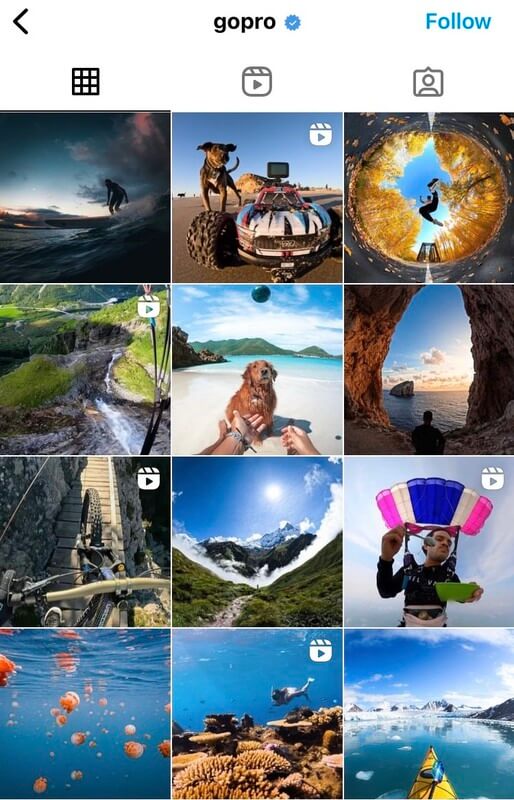
⭐️ Key Takeaway: User-generated content resonates with audiences and empowers them to share their experiences. This creates an authentic and relatable narrative that builds a sense of trust, community, and loyalty to your brand.
2. Slack’s Customer Stories 🤩
As we discussed, content marketing focuses on providing valuable resources to the audience. That’s why, as part of our marketing strategy examples, we’ll dive into how Slack aced this strategy! 🌟
The first thing to know is that case studies demonstrate how a specific product has been effective in the past. Now, this doesn’t imply overwhelming your audience with lots of data and numbers. On the contrary, it’s about sharing insights they find relevant and connecting them with your brand.
For example, Slack highlights how its platform thrives on innovation through inspiring stories. Among these in-depth articles, you can spot well-known companies, such as Spotify, Bold, and Grammarly. At the end of the day, the message shines through: their communication platform is revolutionizing workplaces worldwide.

⭐️ Key Takeaway: Testimonials, case studies, and other types of long-form content can appeal to audiences by taking them on a meaningful journey. Rather than simply enlisting percentages, data, and numbers, focus on explaining how a specific product can help clients tackle their pain points, interests, and needs.
3. Duolingo’s TikTok Takeover 🦉
If you’ve scrolled through this popular platform, you’ve probably seen Duo’s funny antics more than once. From on-point collaborations to unhinged skits, the language learning app has taken over TikTok. Its secret? Leveraging trends and understanding its audience.
Duo, the Owl, takes center stage and runs the shows through sassy captions, humorous quotes, and silly dances. But, make no mistake, while this laid-back approach may seem “easy” to replicate, it’s all about strategy. Part of its success comes from playing TikTok’s strengths and making the most of its short video format.
Moreover, Duolingo balances the ability to jump on trends while staying true to its brand’s voice, message, and goals. It’s also worth mentioning that this app knows what’s buzzing, whether it’s the running gag about mistaking Dua Lipa for Duolingo or the latest worldwide news.
⭐️ Key Takeaway: An authentic and relatable interaction often comes from a deep knowledge of what your audience is interested in. No social media platform works the same way. So, when applying marketing strategy examples, be aware of each app’s do’s and don’ts. Don’t jump on trends for the sake of it. Instead, recognize how you can use them in a way that makes sense for your brand.
Ready to take your inspo up a notch? Here are other top-tier marketing strategy examples you can try out:
✅ Interactive content: polls, quizzes, tools, and resources.
😌 Loyalty programs
👀 Visual storytelling: videos, posts, infographics, and graphs.
✨Influencer sponsorship
🎁 Contests: giveaways, trivia, and challenges.
Wrapping It Up! 😉
Congrats! You’ve reached the final section on how to develop a successful marketing mix strategy. We’re buzzing with anticipation for the journey ahead. And we hope you’re feeling the same thrill, too! 🤩
Before we wrap things up, let’s do a quick recap of this blog’s main takeaways:
🎯 1. Selecting your marketing mix is a process that relies on proper and extensive market research, well-articulated goals and objectives, and a defined ideal customer.
🤔 2. There’s no one-size-fits-all approach when creating a marketing mix; it depends on your overall business goals, industry, niche, market, customers, and budget.
🚗 3. Your marketing mix is a vehicle that moves your company to where you want it to be. Just as a skilled driver adapts to road conditions, a savvy business owner adjusts each element of the mix to the ever-changing landscapes of the market.
P.S. Let’s chat some more about successful marketing strategies! Is there any other topic you’d like us to tackle in upcoming blogs? Drop a comment below and let us know. 😀
✏️ Author Bio

Wendy Gooseberry is a copywriter at Whatagraph – an online platform that offers digital marketing analytics. With over 5 years of marketing experience under her belt, she has a strong understanding of content development techniques and continues to hone those skills every day.
Develop a Succesful Marketing Mix
Get your marketing mix strategy ready to promote your business and get positive results from it! We tell you how to process and succeed in your specific market with a well-rounded marketing strategy that is made just for you!
Make Branding Assets for Your Business


